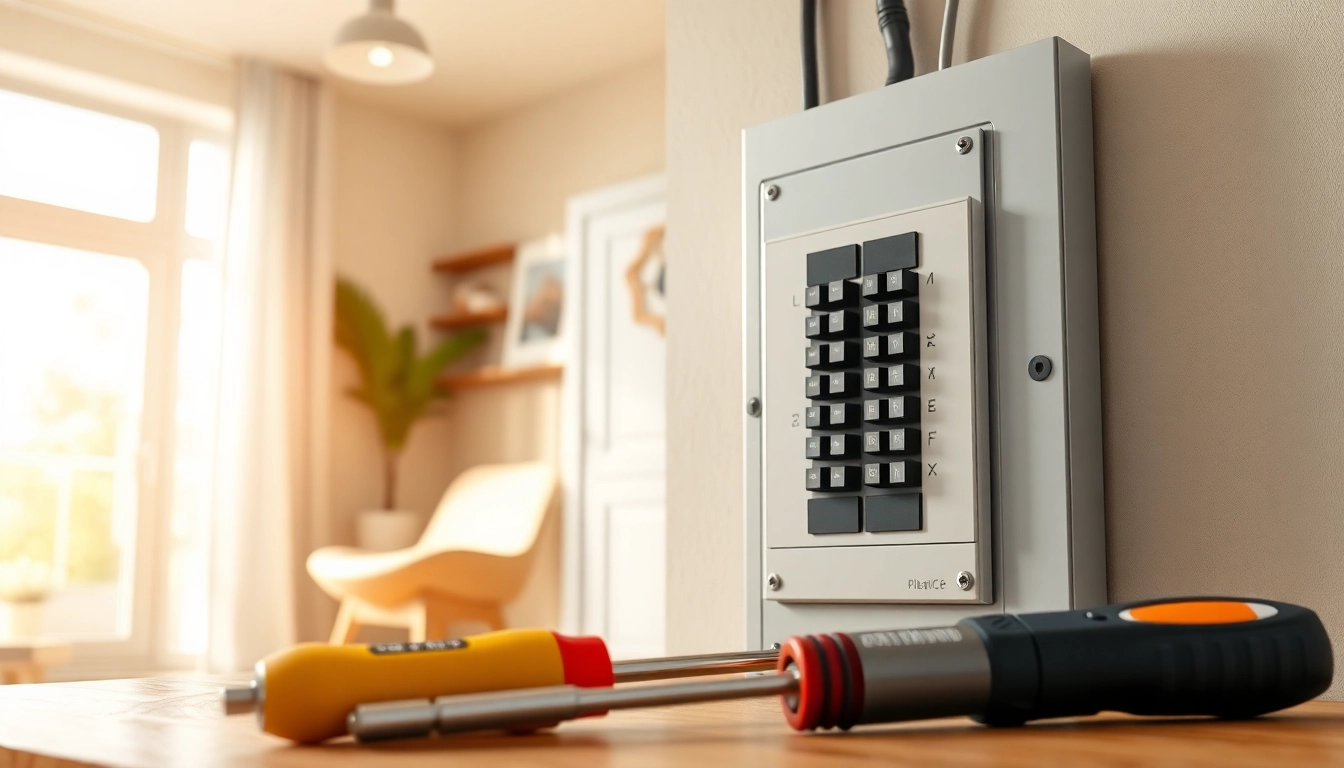What is an Electrical Panel?
Definition and Functions of Electrical Panel
An electrical panel, often referred to as a breaker box or distribution board, is a critical component of your home’s electrical system. It serves as the main hub that manages the distribution of electrical power throughout your residence. The primary function of the electrical panel is to receive electricity from the utility company and distribute it to various circuits throughout the home. It houses circuit breakers or fuses, which are protective devices that automatically shut off the electrical supply to a circuit in the event of an overload or short circuit.
In addition to distributing power, electrical panels ensure the safety and reliability of your electrical system by preventing overloads that could lead to fires or equipment damage. Therefore, understanding the functions and importance of an electrical panel is crucial for homeowners.
Common Types of Electrical Panels
Electrical panels come in various types, each suited to specific needs and applications. Here are some of the most common types:
- Main Service Panel: This is the central hub that connects to the utility company’s power supply. It distributes electricity to various parts of the home.
- Subpanel: A subpanel is an additional panel that branches off from the main panel, often used in larger homes or for specific applications like workshops or garages.
- Smart Panels: Integrating technology and energy management features, smart panels can provide homeowners with insights into their energy usage, allowing for better energy efficiency.
- Load Centers: Similar to main service panels but designed specifically to hold circuit breakers and manage electrical loads efficiently.
Understanding Circuit Breakers
Circuit breakers are essential components of electrical panels. They act as switches that can automatically interrupt the flow of electricity in the event of a fault. Understanding how circuit breakers work can help homeowners recognize when an issue may arise, such as:
- Single-Pole Circuit Breakers: Typically used for 120-volt circuits, these breakers connect to one bus bar and are commonly used for lighting and outlets.
- Double-Pole Circuit Breakers: Used for higher voltage circuits (240 volts), these are necessary for larger appliances like water heaters and HVAC systems.
- GFCI Breakers: Ground Fault Circuit Interrupters are designed to protect against electrical shocks by cutting off power when an imbalance is detected.
- Arc-Fault Breakers: These breakers detect arcing conditions and shut down circuits to prevent electrical fires.
Signs of Electrical Panel Upgrades Needed
Frequent Breaker Tripping
One of the most apparent signs that your electrical panel may need an upgrade is frequent breaker tripping. If you find yourself constantly resetting breakers, it indicates that your system is struggling to handle the electrical load. This situation can arise from overloading circuits, undersized panels, or outdated technology. Regular breakdowns not only disrupt your daily life but can also lead to more severe electrical issues.
Age and Condition of the Panel
The age of your electrical panel significantly influences its performance and safety. Most panels have a lifespan of about 25 to 40 years. If yours is older than this, it might no longer meet modern electrical demands and safety standards. Additionally, physical inspections may expose signs of wear and damage, such as rust, corrosion, or heat marks, which indicate that the panel is reaching the end of its usability.
Increased Electrical Load Requirements
With the growing number of devices and appliances in modern homes, electrical demands have significantly increased. If you’ve added high-energy devices like electric cars, home theaters, or additional HVAC units, your current panel may not be capable of providing sufficient power. This situation also applies if you’re considering adding significant electrical loads, such as a hot tub or a home workshop.
How to Choose the Right Electrical Panel
Evaluating Electrical Needs
Determining your electrical needs is the first step in selecting the appropriate electrical panel for your home. Consider the number of circuits you need, the anticipated electrical load, and any future expansion plans. Conduct a thorough assessment of your current power usage, and consult with a licensed electrician for advice on your specific requirements.
Understanding Amperage Ratings
Electrical panels come with different amperage ratings, commonly ranging from 100 to 400 amps. The correct amperage rating depends on the size of your home and the number of appliances you operate. For most average-sized homes, a 200-amp panel is often sufficient, while larger homes or those with extensive electrical needs may require a 400-amp service. Understanding these specifications will help in making an informed choice.
Brand Recommendations for Electrical Panels
When it comes to selecting a brand for your electrical panel, quality and safety are paramount. Some of the most respected brands in the market include:
- Square D: Known for its reliability and performance, Square D offers a range of options for residential applications.
- Siemens: Provides innovative and energy-efficient panels suitable for modern electrical demands.
- GE: A well-established brand with a history of producing durable and efficient electrical panels.
Maintenance Tips for Longevity
Regular Inspection and Cleaning
Maintaining your electrical panel is crucial for ensuring its longevity and performance. Regular inspections, ideally once a year, should include checking for any signs of wear, corrosion, or moisture. Keeping the panel clean from dust and debris enhances both safety and efficiency. Always remember to turn off the power before cleaning the panel and avoid using excessive force that could damage its components.
Replacing Faulty Breakers
If you frequently experience tripped breakers, it may indicate that particular breakers are faulty and need replacement. Older breakers may not function correctly, even if they are not tripped. Replacing faulty breakers can both improve functionality and enhance safety, protecting your home from potential electrical hazards.
Professional Maintenance: When to Call an Electrician
While some maintenance tasks can be handled by homeowners, others should be conducted by licensed electricians. If you suspect significant problems such as flickering lights, burnt smells, or frequent tripping, it’s vital to consult with a professional. They can conduct a thorough inspection, test the electrical connections, and ensure that the panel is up to code with current safety regulations.
Cost Considerations for Electrical Panel Upgrades
Average Costs of New Electrical Panels
The cost of upgrading your electrical panel can vary significantly based on several factors, including the panel’s amperage, the complexity of the installation, and regional labor rates. On average, homeowners can expect to pay anywhere from $1,500 to $3,000 for a new 200-amp panel, including installation. Higher-cost options, such as intelligent panels, or installations that require extensive rewiring, can push costs upward to $4,000 or more.
Factors Influencing Installation Costs
Several factors can influence the costs associated with electrical panel upgrades. These include:
- Permits and Inspections: Many locations require permits and inspections for electrical work, which can add to the overall cost.
- Upgrading Wiring: If the existing wiring is outdated or insufficient, upgrading the wiring will increase costs.
- Location: Labor costs can vary greatly depending on your geographic location, with urban areas generally being more expensive.
Financing Options for Upgrades
For many homeowners, the upfront cost of upgrading an electrical panel can be daunting. Fortunately, several financing options can ease this financial burden. Many local utility companies offer energy efficiency rebates or financing plans to encourage upgrades. Some contractors also provide financing options, allowing you to pay over time rather than all at once. It’s essential to research and explore all available options to determine what best fits your financial situation.


